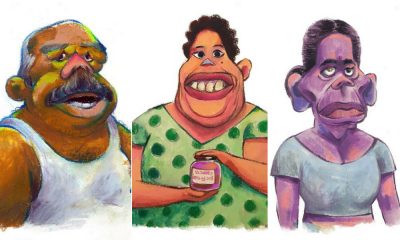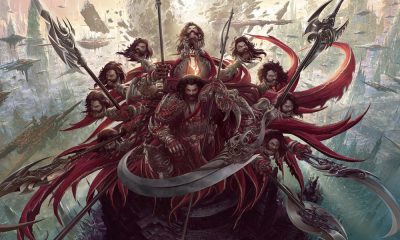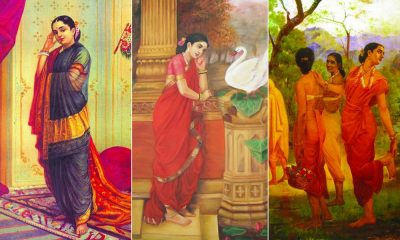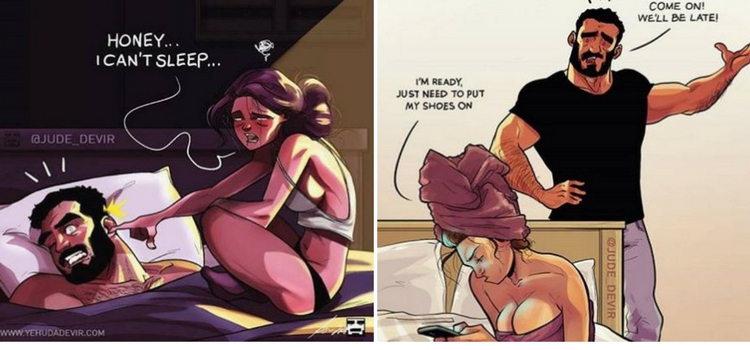Art
DOWN THE ART LANE WITH 5 ARTISTS
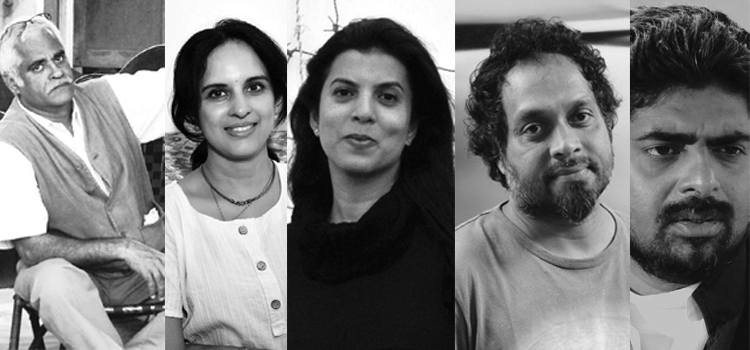
FWD tries to find out what the world looks like through the eyes of five artists
An artwork that invoked an influential experience?
The human life on earth inspires art and expression. Creative individuation and conceptual growth cultivate comprehension of the existence of mankind. Works of art such as ‘Man on the Chair’, ‘Man on Cube’ from the mid 70’s captured the feeling of struggle and strife in plaster. ‘Man with Dog’, a life-size work of 1981 reflects the reformulated concept of sculpture as a form that shares the same space, that of a viewer. This installation presented a kind of self-realisation in the image of man, and was a revelation.

Dhruva Mistry
What kind of art do you most identify with?
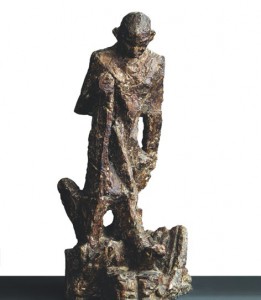
A-sculpture-by-Ramkinker-Baij
Intentional works of art enliven cultural and visual musings. My visual findings enrich communicative ability and transformative skill of abstract concepts of nature as the soul of figuration. The history of art presents genius of artists, known or unknown, whose work reveal human comprehension of their environment and life. I identify with figurative art, either representational or abstract as the expression of curious minds and inquisitive souls, revealing life’s beauty . Name three artists you would like to be compared with. To compare myself with artists or another era today may be presumptuous. However, I admire contemporary and painterly findings of poet Rabindranath Tagore, as well as the sculptural curiosity and visual ventures of sculptor and painter Ramkinker Baij. I respect the conceptual beauty and mindfulness of sculptor Krishna Chhatpar, my mentor at the Faculty of Fine Arts, Baroda.
If you had to revisit an art piece, which one would that be?
I think Lord Shiva Nataraja as a conceptual work of art is worth looking into. The diversity of my visual interest and taste for forms, materials, processes and work attract me to look at wide variety of works from the ancient world, old civilisations, and contemporary cultures.
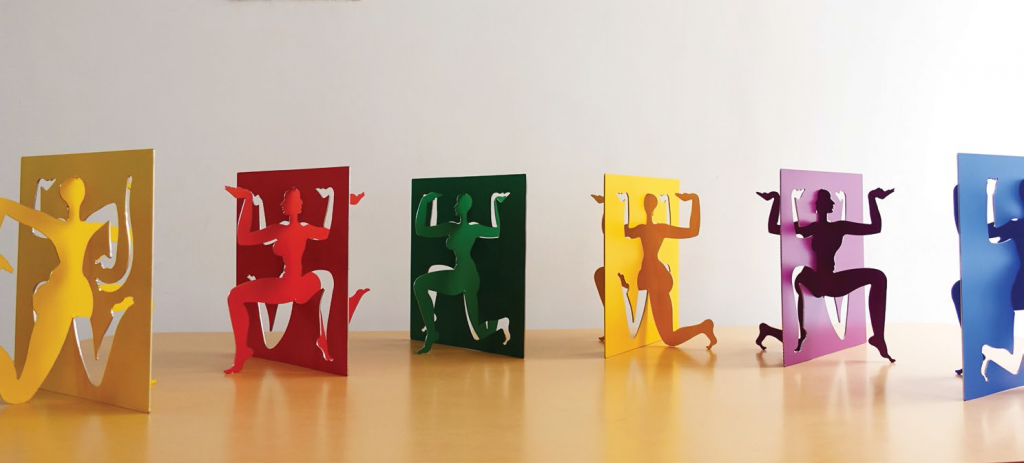
Which is your most recent artwork?
In 2015, I made a metaphorical set of work titled ‘Earth, Water, Fire, Air and Ether’ as emptiness or Sunyata in 8mm medium scale laser cut sheets. In Sanskrit, they relate to five aspects of god or absolute truth. Late that year, I made Spatial Diagrams of the six seasons or Vasant (Spring, mid February-mid March), Grishma (Summer, April-June), Varsha (Monsoon, June-August), Sharad (Autumn, August-October), Hemant (Pre-Winter, October-December) and Shishir (Winter, December- February) in 2mm stainless steel as an anthropomorphic experience.
___________________________________________________________

Parvathi Nayar
An artwork that invoked an influential experience?
If you allow me to pick two artworks by the same artist, I would pick Vincent Van Gogh’s ‘Café by Night’ and ‘Starry Night’. I saw images of them when I was really young, 13 I think, and remember having a moment of epiphany; of thinking, this person inhabits the world that I do, but he ‘sees’ it so differently. I felt that moment of wonderment at being able to see through another person’s mind and heart and head, a different view of the same world.
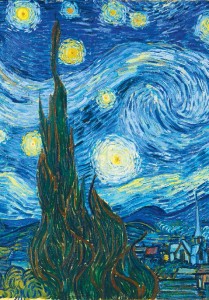
Starry-Night-by-Van-Gogh
What kind of art do you most identify with?
I identify most with contemporary art, for it is the art of our time that speaks about the times in which we live in.
Name three artists you would like to be compared with.
That’s a tough one. I have always admired artists across different disciplines who have had a specific vision of what they want to say – and have been able to say this through multiple styles/media – like filmmaker Peter Weir. His various films have different subject matters, but a particular ease of storytelling; or musician TM Krishna who articulates with such power. His belief in the music in changing times and landscapes; or writer Vikram Seth, who can equally harness prose and rhyme and images to tell his stories.
If you had to revisit an art piece, which one would that be?
Mick Jagger once said, “I haven’t had the time to plan returning to the scene because I haven’t left it.” I would rephrase that to say that while the works have moved and changed enormously, and art continues to be an ongoing process of play, experimenting and consolidating, I never want to revisit a particular artwork. However, I do like revisiting ideas and I see myself perhaps wanting to revisit the idea of gender some time from a fresh perspective.
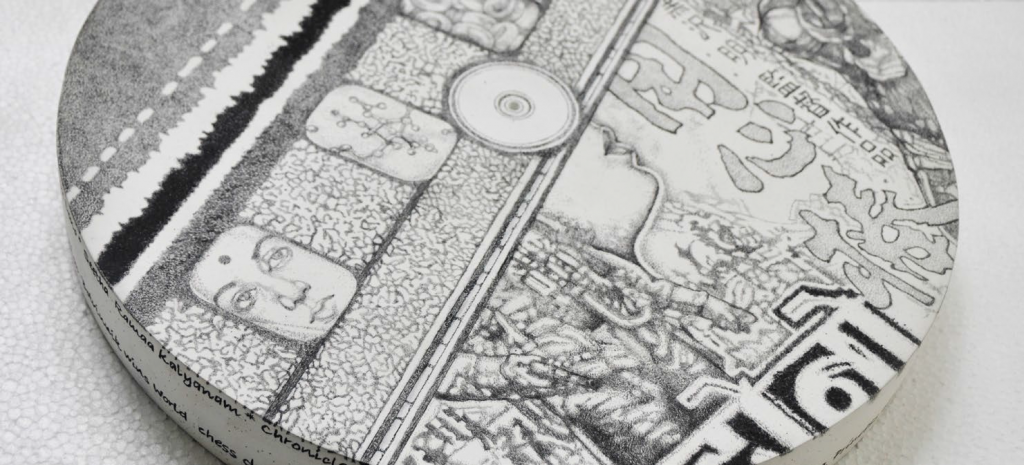
Which is your most recent artwork?
There are, at any given time, several on-going pieces that I work on, at different stages of completion. So it’s a continuum in that sense, the artist’s equivalent of a stream of consciousness that has freeze-frame moments when particular works unite. One of my recent works I completed is a series on carbon, both as carbon footfall and carbon as an organic source.
___________________________________________________________

Reena Kallath
An artwork that invoked an influential experience?
A work by artists Jeanet Cardiff and George Bures Millerpresented at the Documenta 13 held in Kassel, Germany was a personal highlight in terms of the experience it provided, wherein viewers were given an iPod with headphones and asked to follow a prerecorded audio-video clipping. As one begins to navigate through different spaces that simultaneously play on the iPod, our experience in the present moment is constantly interjected and
overlapped with the past, shifting our perceptions between fiction and truth, myth and reality by the interweaving of some surreal moments.
What kind of art do you most identify with?
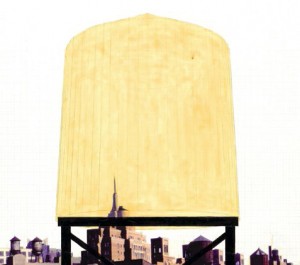
A Rachel Whiteread drawing at the Hammer Museum
While I most closely identify with art that has a strong conceptual core, I find artworks that can transcend beyond the idea, through the ingenuity of approach in their making (whether that might have to do with the process, language, form) usually engage the viewer more successfully, helping experience it both sensually and intellectually.
Name three artists you would like to be compared with.
I don’t like the idea of comparing one artist to another, since each one intrinsically has his or her own unique qualities. Certain works are more accomplished than others and there are certain artists who’ve redefined art giving it a new language. I would hope that my contribution to the field is valued for its nuanced approach and my work is remembered along with artists such as Rachel Whitread, Louise Bourgeoise, and Mona Hatoum, whose work I deeply respect.
If you had to revisit an art piece, which one would that be?
I’m looking forward to the forthcoming Lahore Biennale that will take place in November 2017 with artist Rashid Rana as the curator of the first edition. After the success of the Kochi Biennale and the Dhaka Art Summit in Bangladesh, that have established themselves as seminal platforms for art within South Asia, I think Pakistan can play a vital role by working closely in contributing to the collective richness that the region has to offer.
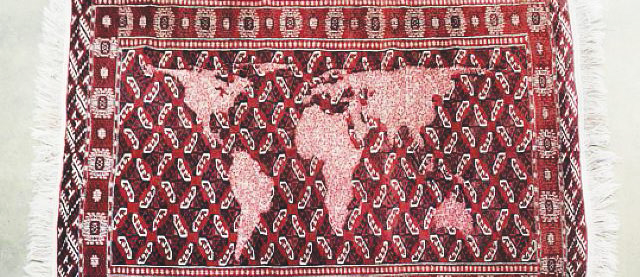
Which is your most recent artwork?
My last body of work titled ‘Hyphenated Lives’ is a reimagining of fantastical mutations within the natural world, where new hybridised species of birds and animals, trees, and flowers, otherwise fore-grounded as national symbols from countries politically-partitioned and proclaimed by nations as their own get combined, symbolically unifying the nations they represent. I felt the need to turn to a species other than the human race to tell us how to share the planet, where the existence of one species depends on the other, or the disappearance of one affects the other adversely.
___________________________________________________________
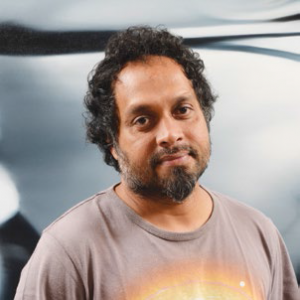
Riyas Komu
An artwork that invoked an influential experience?
It’s easy to beat the same drums again and go on about “classic artists” and how we all were inspired by the same familiar names. So, I shall use this space to pay homage to the new, specifically a film called Fandry – an exceptional, debut film written and directed by Nagraj Manjule and released in 2013. I think this is a film that can produce a seminal experience. Fandry is a multidimensional portrait of the caste system at work – in all its inhumane and brutal ways.
What kind of art do you most identify with?
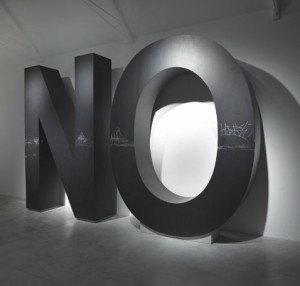
NO by Santiago Sierra
I am most influenced by music and cinema. When I say music, I am not talking about its therapeutic properties, but rather the ones which define a generation, or a culture or the medium itself. I grew up on the music of protest. I am not saying that’s the only thing that influenced me. But it’s amazing to think how a piece of music stays with you and help define a certain worldview or define a character or brings people together. The Malayalee is energised by Bob Marley’s music not just because of his politics but also because somewhere we feel a connect and see him as a “redeemer” through his music. The same is true with classical music in India. It’s not just music – it transcends the medium and creates a common connect for us all.
Name three artists you would like to be compared with.
This could be seen as pure vanity. In the context of art I’d like to think that there is something unique in every artist’s work. So comparison would be superficial. I love writers, storytellers, poets, musicians and everybody who creates art. I love the artists who take risks for their conviction and are politically and aesthetically powerful. So the artists I admire are complex and layered and takes you into many different directions and streams of thought. I am mostly an observer – to their process, art and life. To name a few, I like the practice of Santiago Sierra, the political interventions of Alfredo Jaar and the clarity of Amar Kanwar’s thought process. However, this is not a comparison.
Which is your most recent artwork?

My last work was titled “Get a Dark Cloud Free” and is part of my ongoing Experiments with Gandhi. It was exhibited at the Delhi Art Fair in February this year.
If you had to revisit an art destination, which one would that be?
One place I want to visit again is Barcelona. Not just because of the art, but because it is home to one of the world’s best football teams, and my personal favourite, Real Madrid; because it offers amazing architectural asterpieces; because of its outstanding culinary experiences and because it is packed with creative people.
___________________________________________________________
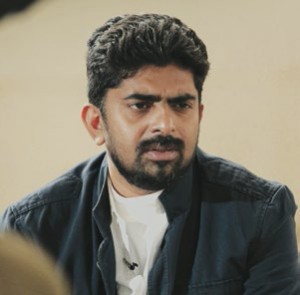
Sumedh-Rajendran
An artwork that invoked an influential experience?
Artworks from the baroque period. It is hard to point out a single work among those treasures. Albert Camu’s “Happy Death” in literature and Andre Tarkovsky’s film “Ivans Childhood” have really invoked great experiences in me.
What kind of art do you most identify with?
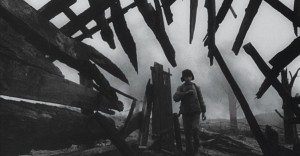
A still from Ivan’s Childhood
As a sculptor dealing with time and its constant negotiation with the surroundings, I try to understand and identify myself with films and architecture. Both articulate time and space in its own way and brings new meanings and experiences to everyone.
Name three artists you would like to be compared with.
The practice of art to my perception is a process of realisation that cannot be compared or gauged. Each artist tries to bring their own experience and interpretations. And for this same reason, I would not want to be compared with any other artist.
An artwork that has surprised you?
An early eighth-century bronze sculpture of Shiva and Parvathi from the Thanjavur museum. Its enigmatic revelation about the art practice is prodigious.
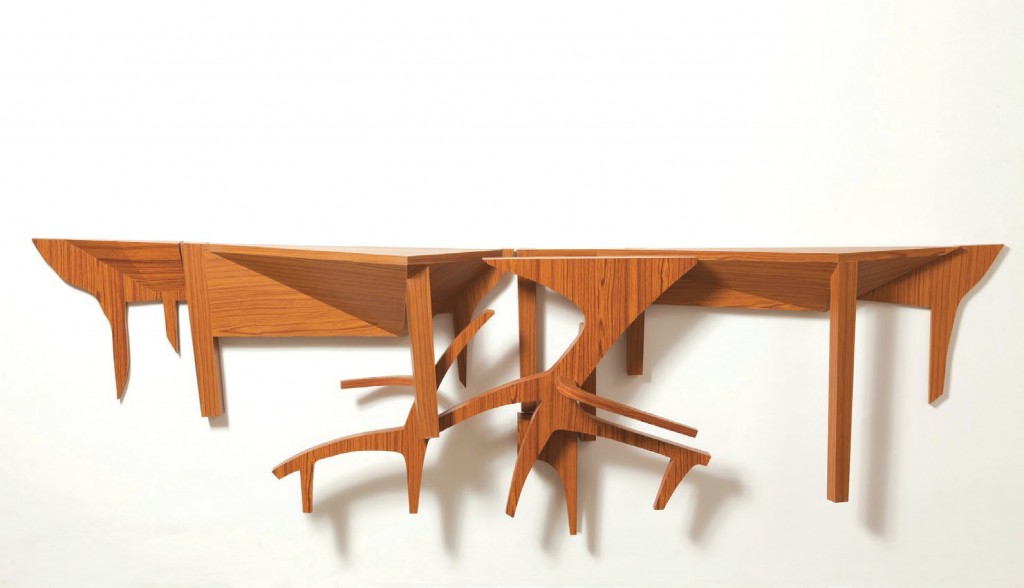
Which is your most recent artwork?
My latest work is “Half Real” which is about things that lose its real meaning of existence and transform into another; those that end up carrying a fabricated memory.
Words by FWD Media Photographs from Various Sources
Art
The Microscopic Handbag Phenomenon: MSCHF’s Bold and Tiny Louis Vuitton Creation
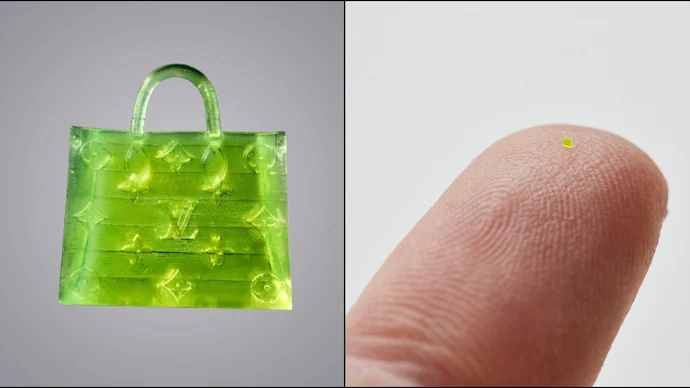
In the realm of fashion, innovation knows no bounds, and the boundary-pushing collective known as MSCHF constantly proves this point. Their latest creation, a microscopic handbag inspired by Louis Vuitton, has taken the industry by storm, captivating fashion enthusiasts around the globe. Breaking free from traditional size constraints and redefining functionality, this miniature accessory has ignited curiosity and sparked a sensation. Join us as we delve into the extraordinary world of MSCHF’s microscopic handbag, exploring its origins, unique features, and the remarkable buzz it has generated.
MSCHF, renowned for their unconventional and thought-provoking projects, partnered with luxury fashion house Louis Vuitton to unleash a game-changing collaboration. Together, they birthed a surprising twist on the classic handbag, pushing the boundaries of scale to an entirely new level. The microscopic handbag challenges the norm and introduces an audacious new concept.
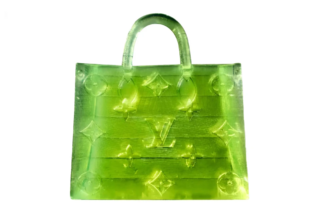
Measuring a mere 1.5 inches in height, the microscopic handbag is a masterpiece of miniaturization. This whimsical accessory captures the essence of a traditional Louis Vuitton purse, complete with the iconic monogram pattern and signature leather trim. Despite its minuscule size, it exudes luxury and craftsmanship, embodying the brand’s prestige and aesthetic.
The MSCHF microscopic handbag represents a captivating fusion of fashion and art. It blurs the lines between these creative realms and prompts us to question our perception of material possessions. Through this micro-sized wonder, MSCHF challenges our understanding of fashion’s role in society and invites us to contemplate the value we attach to material goods.
Since its introduction, the microscopic handbag has caused a viral sensation across social media platforms. Its diminutive size and unexpected collaboration have captivated fashion enthusiasts and sparked intriguing discussions. This extraordinary creation serves as a catalyst for conversations about fashion trends, the power of satire in design, and the evolving landscape of the industry. Once again, MSCHF has successfully captured the attention of the fashion world, pushing boundaries and reshaping our perception of what is considered fashionable.
MSCHF has cemented its legacy as a disruptive force in the fashion and art realms. Their innovative and thought-provoking projects consistently challenge norms and captivate audiences. With the microscopic handbag, they have once again showcased their ability to generate intrigue, spark conversations, and inspire wonder within the industry.
In conclusion, the MSCHF microscopic handbag stands as a testament to bold creativity and audacity in the world of fashion. Its tiny size and unexpected collaboration with Louis Vuitton have shattered conventional handbag design and ignited curiosity on a global scale. This extraordinary creation not only exemplifies the artistry and innovation of MSCHF but also invites us to reflect on the ever-evolving nature of fashion and its profound impact on our collective imagination. As we eagerly anticipate MSCHF’s next groundbreaking venture, one thing is certain: they will continue to redefine the boundaries of what is possible in the world of fashion.
Art
Inside Louis Vuitton’s Extravagant Airport Lounge: A Luxurious Layover Experience
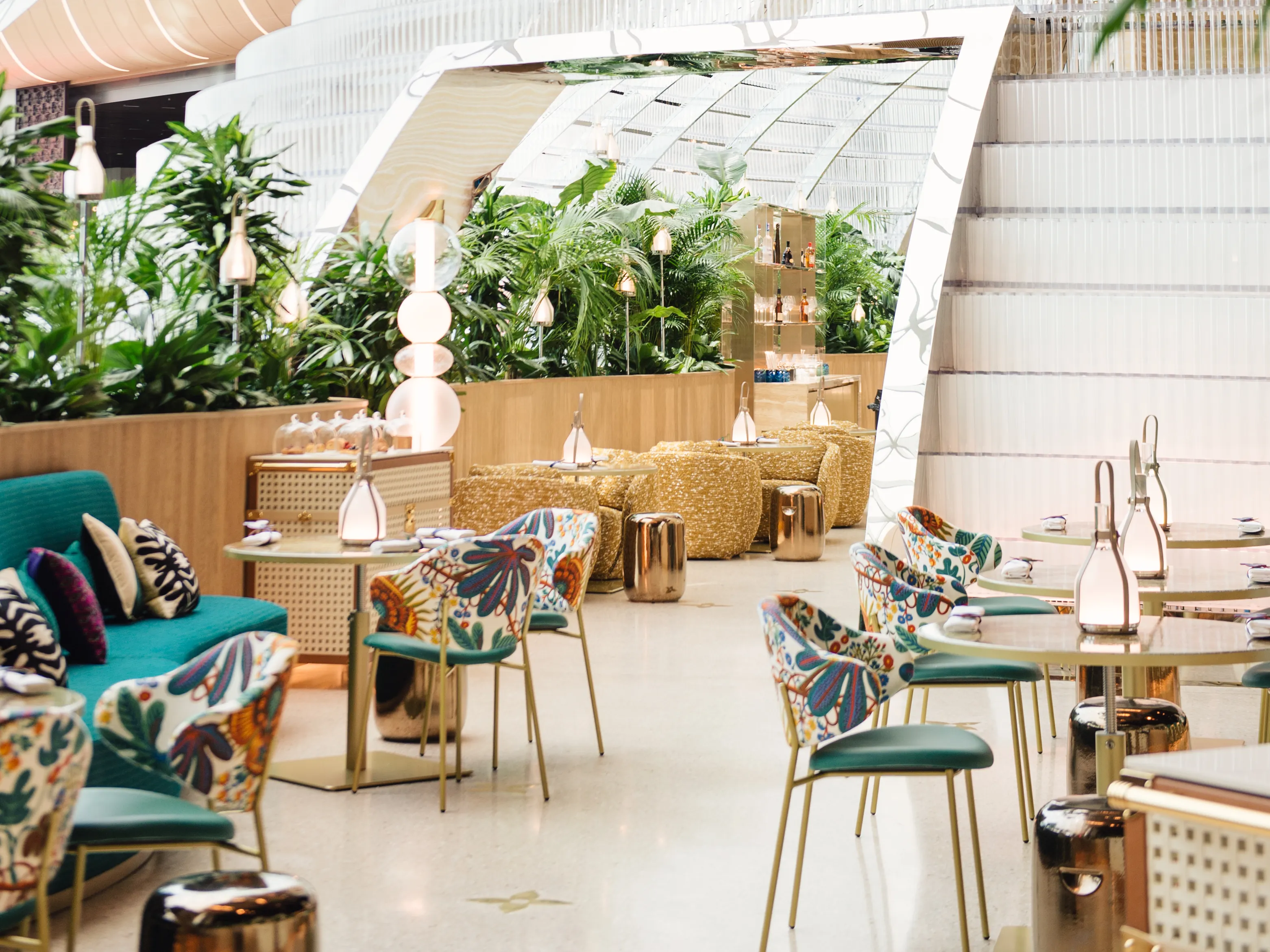
Louis Vuitton, the iconic luxury fashion brand, has ventured into a new and unprecedented realm by opening an airport lounge at Hamad International Airport in Doha, Qatar. Known as the “Louis Vuitton Lounge by Yannick Alléno,” this unique space caters to first or business class guests traveling with Qatar Airways or those belonging to the Louis Vuitton clientele.
Helmed by renowned three-Michelin-starred French chef Yannick Alléno, the lounge offers a gastronomic experience like no other. Guests can indulge in Parisian viennoiseries, smoked fish platters with caviar, tea sandwiches stamped with Vuitton’s fleur monogram, and a range of exquisite dishes such as langoustine carpaccio, yuzu-flavored confit lamb shoulder, and pilaf rice with dried fruit and spices. Coffee enthusiasts can enjoy expertly crafted cappuccinos with the iconic “LV” logo on the foam.
The Louis Vuitton Lounge is not only a culinary haven but also a visual delight. The space is adorned with designer furniture, including pieces from Louis Vuitton’s Objets Nomades collection. With India Mahdavi low tables, Paolo Lenti high tables, and Costela armchairs by Martin Eisler, the lounge exudes sophistication and elegance.
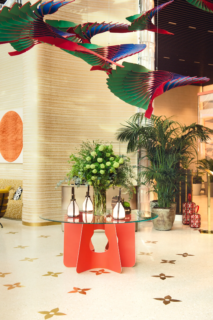
Upon entering the lounge, guests are greeted by a lush jungle-like ambiance, with abundant greenery and Quetzal bird mobiles hanging overhead. Flanking the doors are stacks of Louis Vuitton trunks, paying homage to the brand’s heritage and travel legacy. The intention behind the design is to create a welcoming environment that transcends time, ensuring all travelers feel at ease during their visit.
This innovative venture by Louis Vuitton comes at a time when airport lounges are often viewed as functional spaces rather than glamorous destinations. Hamad International Airport, known for its exceptional shopping experience, is ranked as the second-best airport in the world. As the hub for Qatar Airways, which has been consistently ranked as the world’s best airline, the airport attracts millions of travelers each year. The Louis Vuitton Lounge revives the glamour and allure of air travel, providing a luxurious layover experience that leaves a lasting impression.
With this audacious collaboration between fashion and aviation, Louis Vuitton is redefining luxury and hospitality. The lounge sets a new standard for travel experiences, where fashion, gastronomy, and design seamlessly intertwine. As airports evolve, this collaboration offers a glimpse into the future of travel, where each moment is curated to delight and inspire discerning globetrotters. The Louis Vuitton Lounge at Hamad International Airport represents the art of travel, symbolizing the enchantment that awaits modern travelers seeking a truly extraordinary journey.
Art
Summer Nails Sizzle: The Hottest Trends for Your Next Mani-Pedi
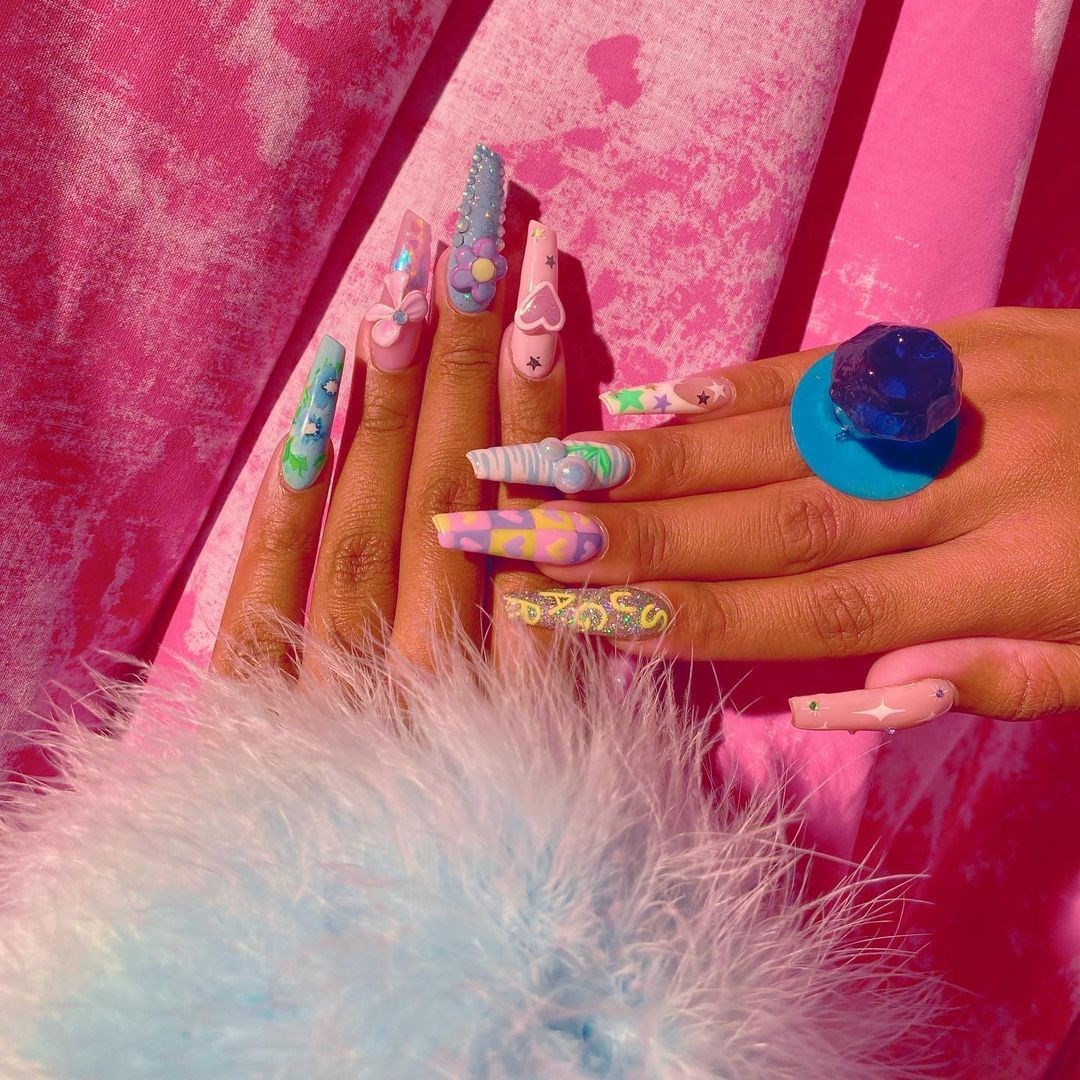
Summer is the perfect time to experiment with new nail trends and colors, so why not try something bold and beautiful? This season’s nail trends are all about bright hues, playful patterns, and statement-making designs. Here are some of the top nail trends to try this summer.
1. Neon Colors
One of the biggest nail trends this summer is neon colors. From electric green to bright pink, these bold hues will add a pop of color to any outfit. Go for a full set of neon nails or add a pop of color to your favorite neutral shade.
2. Negative Space Nails
Negative space nails are a trend that’s been around for a while, but this summer it’s all about getting creative with your designs. Try a geometric pattern or a cute little fruit design for a playful and fun look.
3. Glitter and Sparkle
Summer is all about shimmer and shine, so it’s no surprise that glitter and sparkle are hot nail trends this season. Add some sparkle to your nails with a glitter topcoat or go all out with a full set of glitter nails.
4. Pastel Hues
Pastel hues are always popular in the summertime, and this year is no exception. Soft shades of lavender, peach, and baby blue are perfect for a subtle and sweet look.
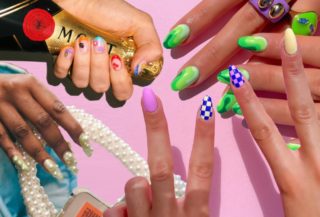
5. Floral Designs
Floral designs are always in style, but they’re especially popular in the summer. From dainty little flowers to bold and colorful floral patterns, there are so many ways to incorporate this trend into your nail art.
6. Tie-Dye
Tie-dye is a trend that’s been making a comeback in fashion and beauty, and it’s the perfect way to add some retro vibes to your summer nail look. Try a rainbow tie-dye design or go for a more subdued look with a few pastel shades.
7. Animal Prints
Animal prints are another trend that’s been around for a while, but this summer it’s all about bold and bright colors. Leopard, zebra, and snake prints are all popular choices, and they’re the perfect way to add a little bit of edge to your summer nail look.
There you have it, some of the hottest nail trends to try this summer. Whether you prefer bold and bright colors or subtle pastel shades, there’s a trend for everyone. So why not experiment with some new nail art and make a statement this season?
-
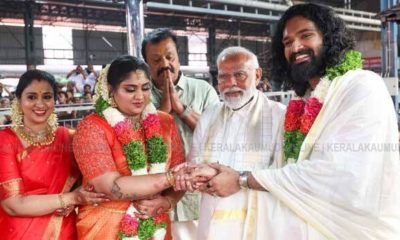
 Entertainment3 months ago
Entertainment3 months agoThe Stunning looks from Bhagya Suresh’s Wedding
-
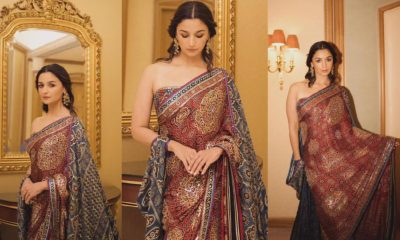
 Fashion3 months ago
Fashion3 months agoMost Discussed Ajrakh Saree of Alia Bhatt
-

 Entertainment3 months ago
Entertainment3 months agoThe Most Stylish Guests of Bhagya Suresh Reception
-
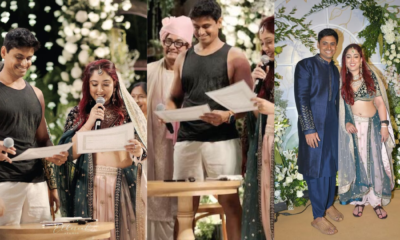
 Entertainment4 months ago
Entertainment4 months agoEverything about the Ira Khan wedding that is out of the norm
-

 Entertainment3 months ago
Entertainment3 months agoBridal Bliss : All Bridal Looks of Swasika Vijay
-
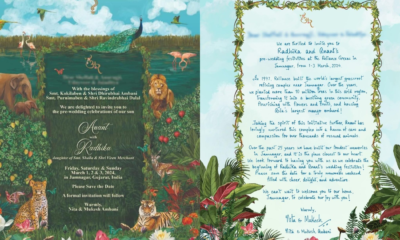
 Entertainment3 months ago
Entertainment3 months agoAll About The Dreamy Pre Wedding Invite Of Anant Ambani & Radhika Merchant
-
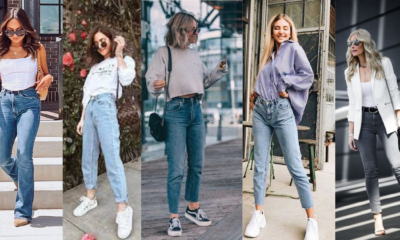
 Fashion3 months ago
Fashion3 months agoMajor Denim Trends You Need To Know in 2024
-

 Entertainment3 months ago
Entertainment3 months agoBest Looks from Golden Globes 2024




